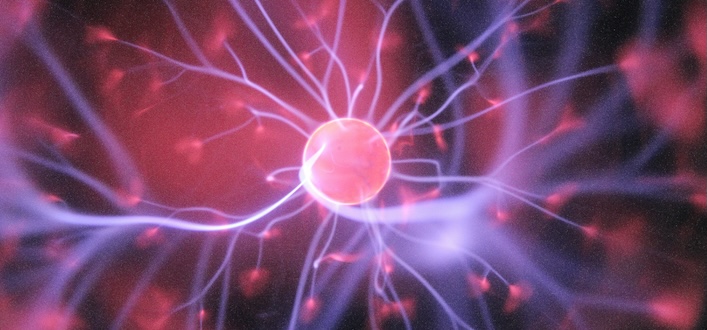
NTT has detailed a wide-ranging set of updates to its core platform and toolsets. Comprising efforts across its various operational and research divisions, the group has now logically amplified its focus on bringing artificial intelligence (AI) to bear across its technology bases through a process that spans photonics, encryption, cryptography and the physics of AI itself.
Talking about propelling the world into a new era shaped by AI, NTT focuses on AI toolset productization like any other vendor, but its scope and girth enable it to do so from an infrastructure perspective that examines the working physics of AI. Key application areas for AI (in the company’s view) include, workforce transformation, space-integrated computing (which here relates to HAPS or High-Altitude Platform Stations, in the stratosphere in geostationary orbit), critical care anywhere and sustainable datacenter technologies.
“In recent years, the emergence of large language models (LLMs) has marked a significant turning point in the field of AI, offering unprecedented opportunities for innovation across multiple sectors,” said Kazu Gomi, president and CEO of NTT Research, Inc. “[We are] exploring critical questions surrounding the future of AI applications, sustainability and privacy and security challenges in an increasingly complex technological landscape. Our goal is to harness the transformative potential of AI and ensure that technology serves to enhance the quality of life for all”
Physics of AI Group
A key initiative from NTT in this space is its formalization of a Physics of Artificial Intelligence Group, an operational division spun off from a group within the NTT Research Physics & Informatics (PHI) Lab. This working body is dedicated to pursuing an interdisciplinary approach to understanding AI. This perhaps suggests an embrace of not just plain old language models and inference logic, but a wider willingness to tap into the physics of decision making, neuroscience and machine learning.
“The Physics of Artificial Intelligence Group aims to address similarities between biological and artificial intelligences, further unravel the complexities of AI mechanisms and build trust that leads to more harmonious fusion of human and AI collaboration. The goal is to obtain a better understanding of how AI works in terms of being trained, accumulating knowledge and making decisions so that we can design cohesive, safe and trustworthy AI in the future,” explained the NTT team, at its Upgrade 2025 event in San Francisco this week.
AI Brain vs. Animal Brain Power
The group will aim to “look beyond conventional benchmarks” and recognize the need to support goals such as fairness and safety, which lead to sustainable AI adoption. In terms of energy efficiency, other groups in the PHI Lab are already engaged in efforts to reduce the energy consumption of AI computing platforms through optical computing and a path-breaking, thin-film lithium niobate (TFLN) technology. The team says that they are inspired by the “vast differential” between the watts consumed by LLMs and the human or animal brain when decisions need to be made. As such, the new group will also explore ways to leverage similarities between biological brains and artificial neural networks.
The new group will continue to collaborate with the Harvard University Center for Brain Science (CBS), led by Harvard Professor Venkatesh Murthy, and with Princeton University Assistant Professor (and former NTT Research Scientist) Gautam Reddy. It also plans to collaborate with Stanford University professors.
“The key for AI to exist harmoniously alongside humanity lies in its trustworthiness and how we approach the design and implementation of AI solutions,” said NTT’s Hidenori Tanaka, who is also a group leader in AI research at the CBS-NTT physics of intelligence program at Harvard. “With the emergence of this group, we have a path forward to understanding the computational mechanisms of the brain and how it relates to deep learning models. Looking ahead, our research hopes to bring about more natural intelligent algorithms and hardware through our understanding of physics, neuroscience, and machine learning.”
A Three-Pronged Mission
Going forward, the Physics of Artificial Intelligence Group has a three-pronged mission. These “prongs” include an effort to deepen our understanding of the mechanisms of AI so that we can integrate ethics from within (rather than apply a patchwork of fine-tuning, i.e. enforced learning, afterwards).
The second prong is an effort to borrow from experimental physics so that we can create what NTT calls “systematically controllable spaces” of AI and observe the learning and prediction behaviors of these intelligence functions in the work and home environments.
Thirdly, there is a dedication to healing what the company defines as the “breach of trust” between AI and humans via improved operations and data control.
Taking stock of NTT’s wider moves in the AI arena, there is always the perception that NTT is initially a hardware company, given its history in telecommunications and dominance in the Japanese market (and success elsewhere). So why should we listen to it when the group talks about software, programming logic and now AI?
It’s important to remember that even in the datacenter construction space where NTT is also prolific, so much of what the organization does is essentially “software-defined” engineering, so its moves to formalize, codify and deconstruct what happens next in AI is arguably justifiable. At the very least, it’s an intelligent approach to intelligence, which is quite smart.

